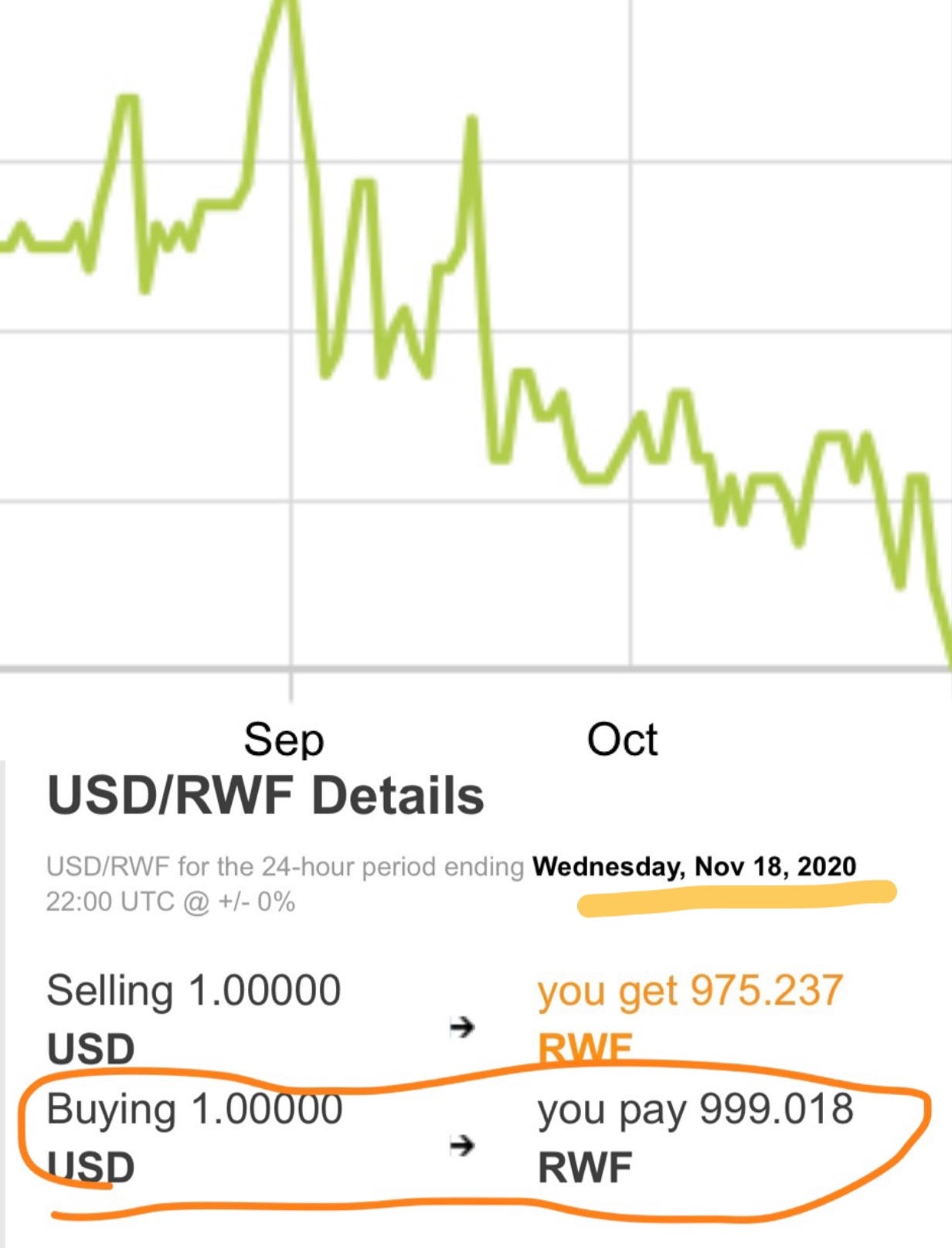By David Himbara

The Rwandan currency is falling to 1,000RWF for 1 US Dollar. This is due to Rwanda’s trade deficit which leads to more debts. The bottomline is that Rwanda imports far more goods and services from outside than it exports to the outside world. To make up for the trade shortfall, Rwanda borrows money, which becomes a burden that in turn depreciates the country’s currency. As of November 18, 2020, the Rwandan currency had dropped to the exchange rate of 1 American dollar to nearly 1,000 Rwandan Franc. The New Times confirmed on November 13, 2020, that Rwandan Franc was trading in Rwandan forex bureaus at a rate of nearly Rwf1000 for 1 Dollar.
The factors causing the Rwandan Franc to fall
Rwanda’s economy faced challenges since 2019, including self-inflicted wounds. Rwanda closed its border with Uganda through which much of Rwanda’s international trade transits to the Kenyan seaport of Mombasa. Yet, Uganda is one of Rwanda’s major export markets. Before the border closure, Rwanda exported to Uganda goods worth US$200 million or 11.24 percent of Rwanda’s exports, according to the World Bank’s 2018 data.
Then Covid19 hit an already weak economy with a devastating impact. As the International Monetary Fund (IMF) stated in April 2020, the COVID-19 Pandemic “ground Rwanda’s economy to a halt.”
As a result of Rwanda-Uganda border closure and Covid19, Rwanda’s exports declined, while the cost of imports increased. In 2019, the value of Rwandan exports was US$1.2 billion versus the imports of US$2.8 billion. In other words, Rwanda’s imports more than doubled its exports. Rwanda’s trade deficit was US$1.5 billion in 2019.
IMF’s loans to Rwanda provided a temporary solution
The make up the trade shortfall, Rwanda secured loans from the IMF. The first loan was disbursed on April 2, 2020 to the amount of US$109 million. Disbursed on June 11, 2020, the second loan amounted to US$111 million, bringing the total of IMF loans to US$220 million. This temporary solution does not address Rwanda’s fundamental problem of buying more goods and services from outside than what it sells to the outside world. This chronic trade imbalance and debt will keep depreciating the Rwandan currency. It is in this context that, on October 13, 2020, Moody’s Investors Service downgraded Rwanda’s economic outlook to negative. Moody’s cited Rwanda’s debt burden, which “had been rising before the coronavirus shock and is being exacerbated by it.”






























































